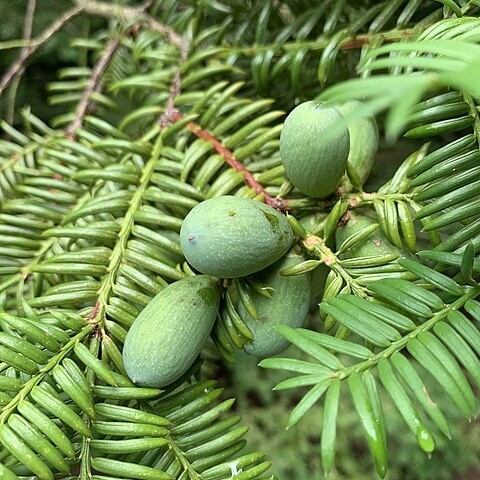A shrub or tree. It can grow 25 m tall. The branches are spreading. The small branches are reddish-brown. The leaves are dark and glossy green above and with blue white bands underneath. The leaves have a scent when crushed. The female cones are olive green. The kernel is edible.


